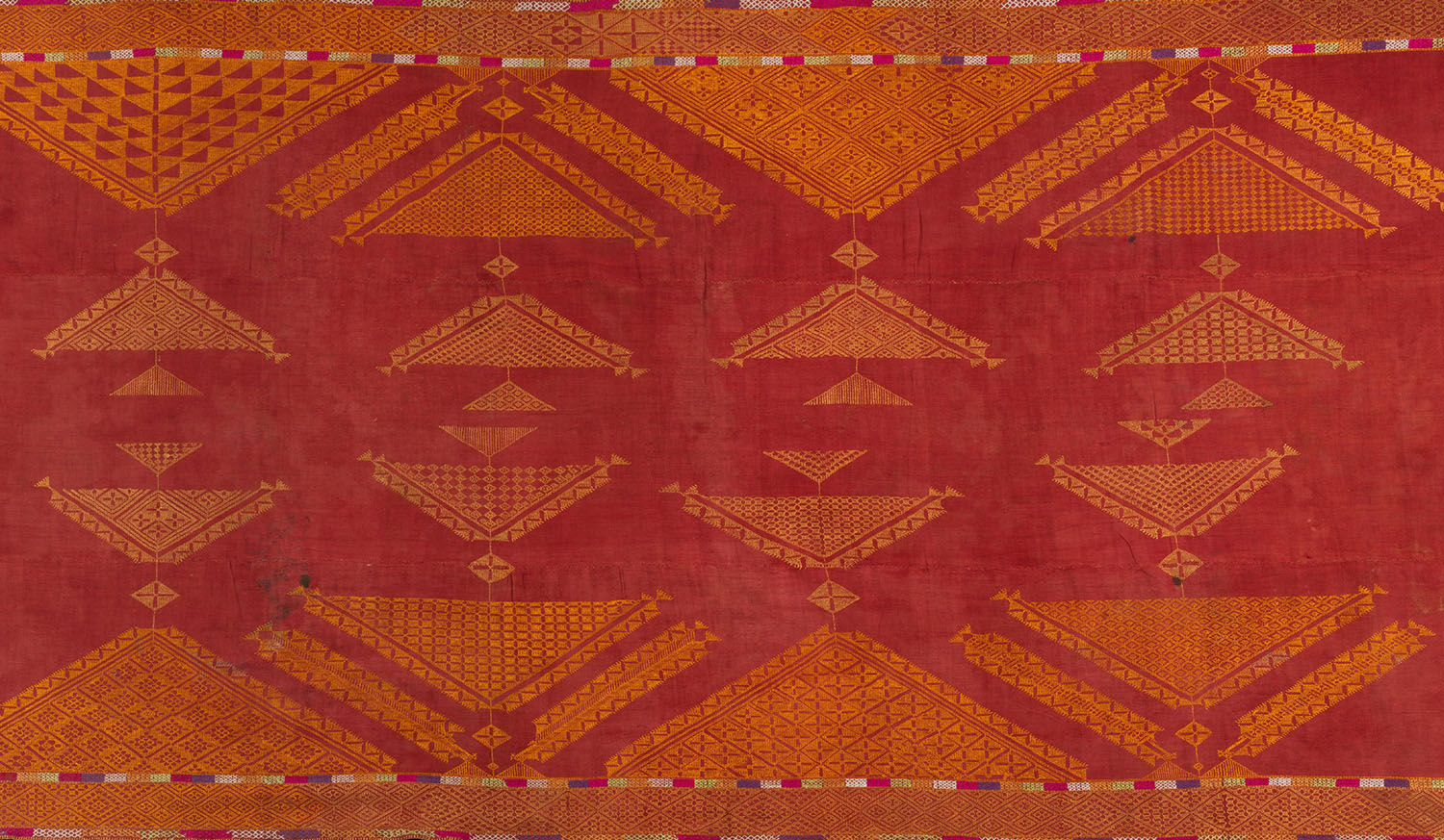ARTICLE
Chope Phulkari
A reversible phulkari that features prominently in wedding rituals, a chope is a large red chaddar (or wrap) embroidered with yellow and gold thread.
The chope’s design is composed of geometric forms, mainly triangles and lattice formations, with the occasional inclusion of a peacock or cow motif. Thin lines in the pattern are embroidered in any colour other than yellow or red as a nazarbuti motif, believed to protect the bride from misfortune or malevolent stares. The embroidery is applied using a double running stitch, making the design visible on either side of the chope. The decoration is denser towards the longer sides of the chope than the middle, and the short sides lack borders. This results in a red stripe that runs lengthwise through the middle of the chaddar, narrow through the body and widening at each end, meant to signify endless fortune for the bride wearing the chope.
The chope is of great ritual importance to the bride’s family. Her maternal grandmother traditionally begins embroidering the chope on the day she is born. The phulkari is then gifted to the bride by her maternal uncle during the chura charana or bangle-wearing ceremony, a wedding ritual in which the women from the bride’s family sit together and sing suhag or matrimonial songs. The chope is draped around the bride by members of her family after the vatna or ceremonial bath that she takes before the wedding.
Chopes continue to be made and used in traditional Punjabi weddings. Examples of historic chopes are held in the collection of the Philadelphia Museum of Art.
Bibliography
Our website is currently undergoing maintenance and re-design, due to which we have had to take down some of our bibliographies. While these will be re-published shortly, you can request references for specific articles by writing to hellomapacademy@map-india.org.








